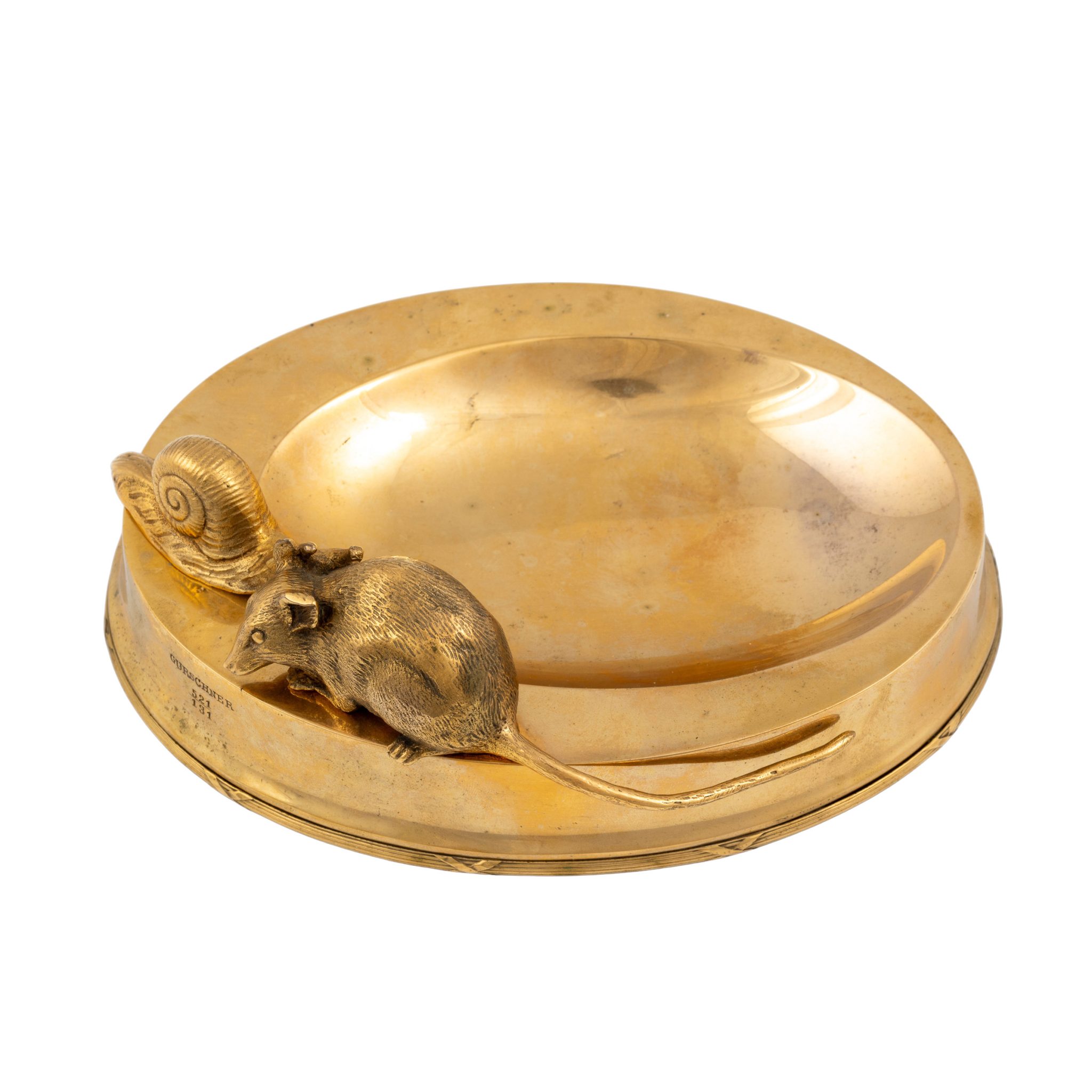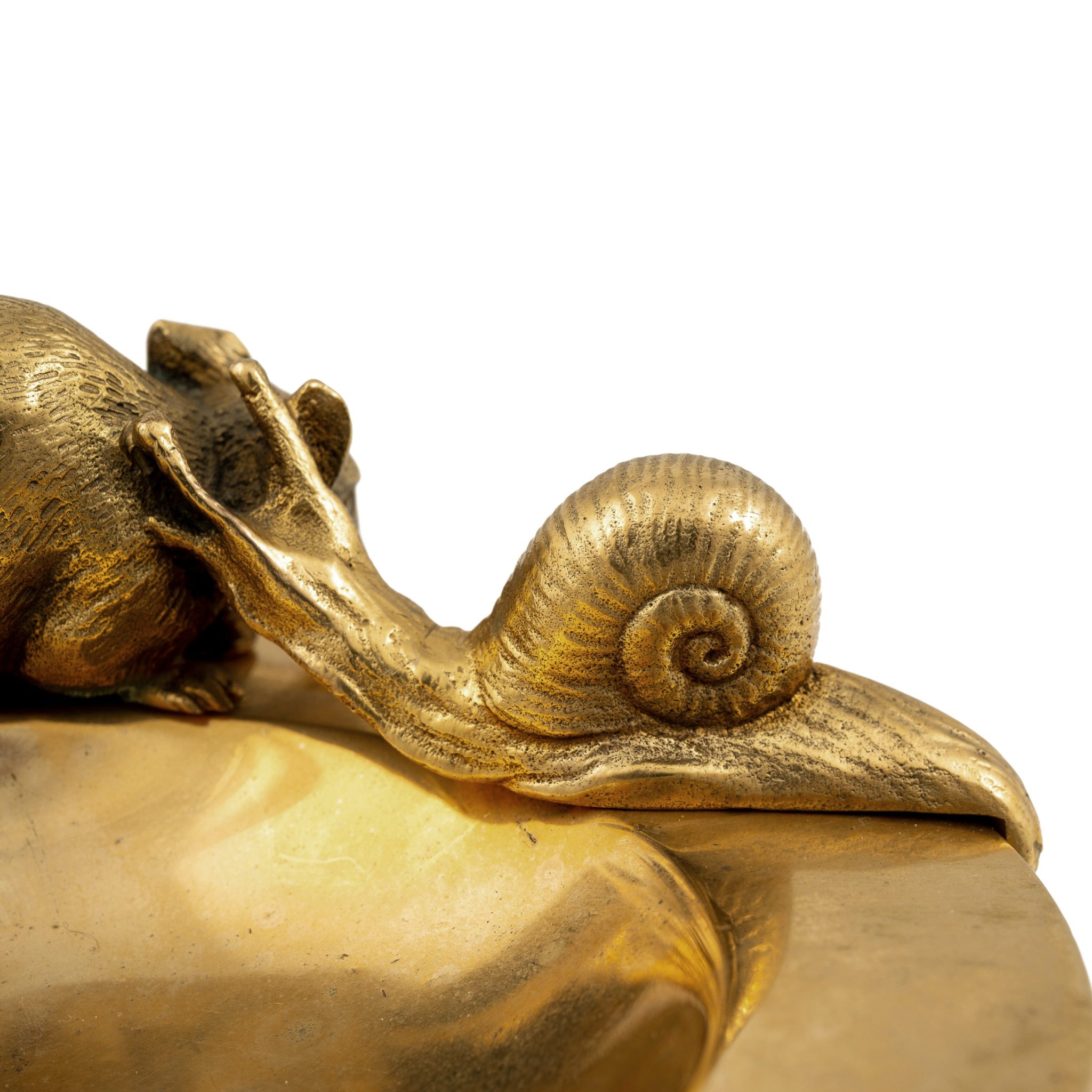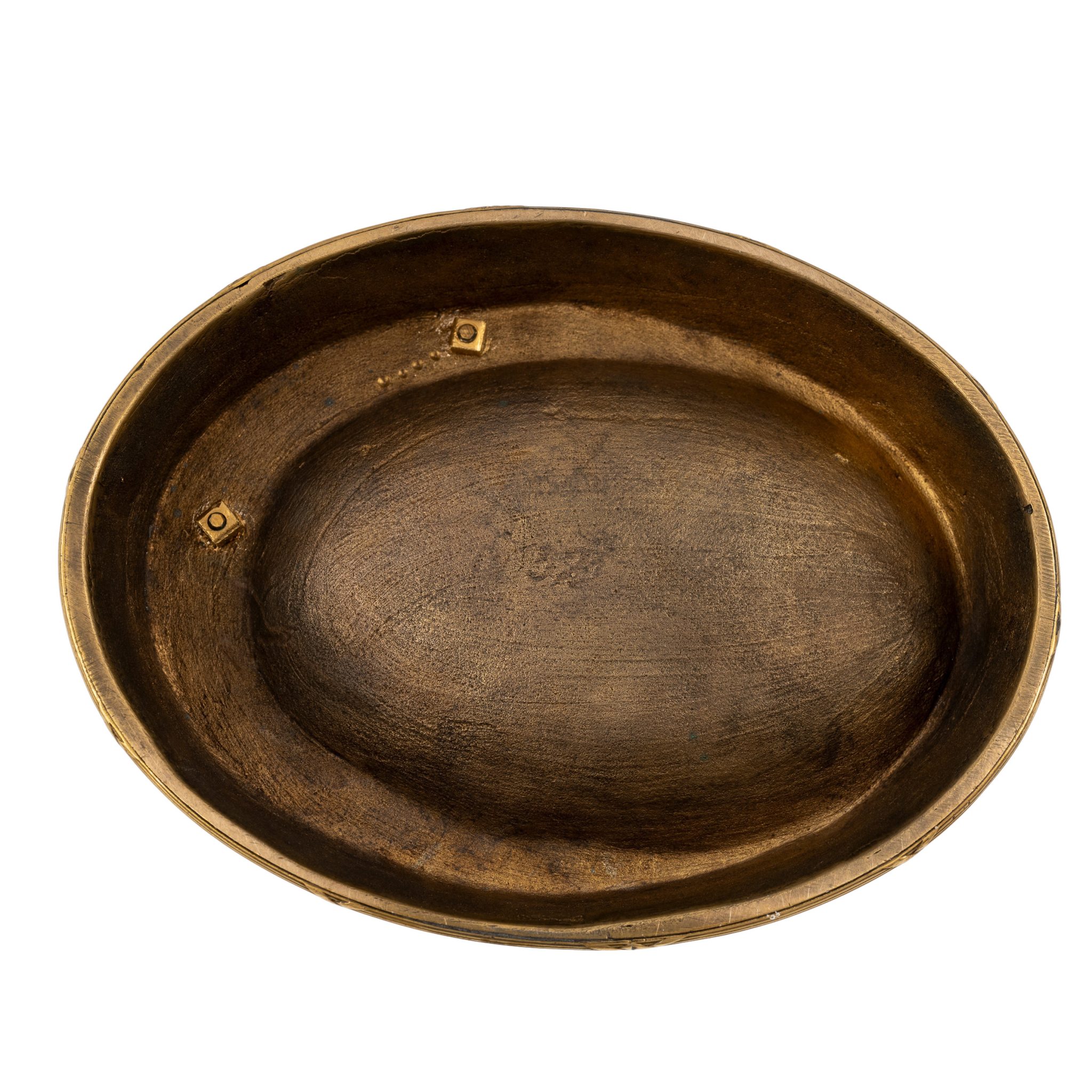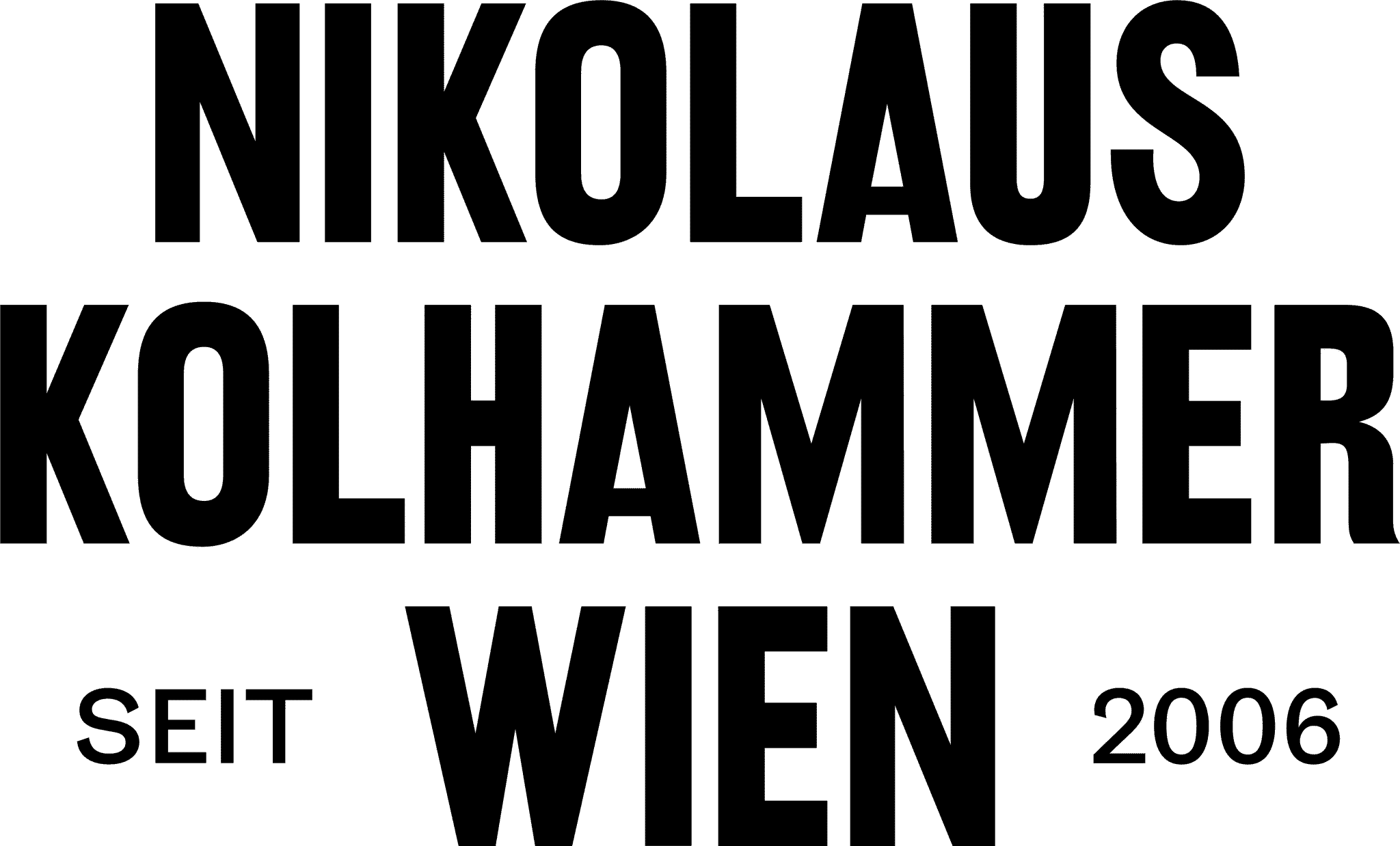Bronze bowl with mouse and snail Gustav Gurschner ca. 1907
Bronze bowl with mouse and snail, design by Gustav Gurschner, execution by K.K. Kunst-Erzgießerei Wien, ca. 1907, bronze, cast, polished, signed and marked
Description
The small bronze bowl featuring a lifelike snail and mouse is a stylistic exception in Gustav Gurschner’s body of bronze works. It is likely to be understood in the context of the 16th-century tradition of natural castings, where artists created casts of small animals such as crayfish, lizards, toads, shells, snakes, beetles, and even mice. These casts were typically made of bronze, occasionally of silver, lead, or plaster, and were often incorporated into tableware, writing instruments, bowls, and other utilitarian objects. Due to their strikingly lifelike execution and the apparent vitality they conveyed, these objects were particularly valued.
In contrast to the natural casts of the Renaissance, which were made directly from living animals, Gurschner’s figures are not actual casts but rather realistic representations that reflect his skill as a bronzier.
The combination of snail and mouse may also have been inspired by contemporary works, such as the 1897 marble sculpture by Georges Gardet, which depicts two mice with a snail shell. This work was created in the same year that Gurschner was in Paris.
The small bowl reflects Gurschner’s knowledge of both contemporary trends and ancient artistic traditions, which he skillfully translated into his own designs.
Inquiry
By submitting the inquiry form, you agree to the use of your data for this inquiry. Privacy Policy
















